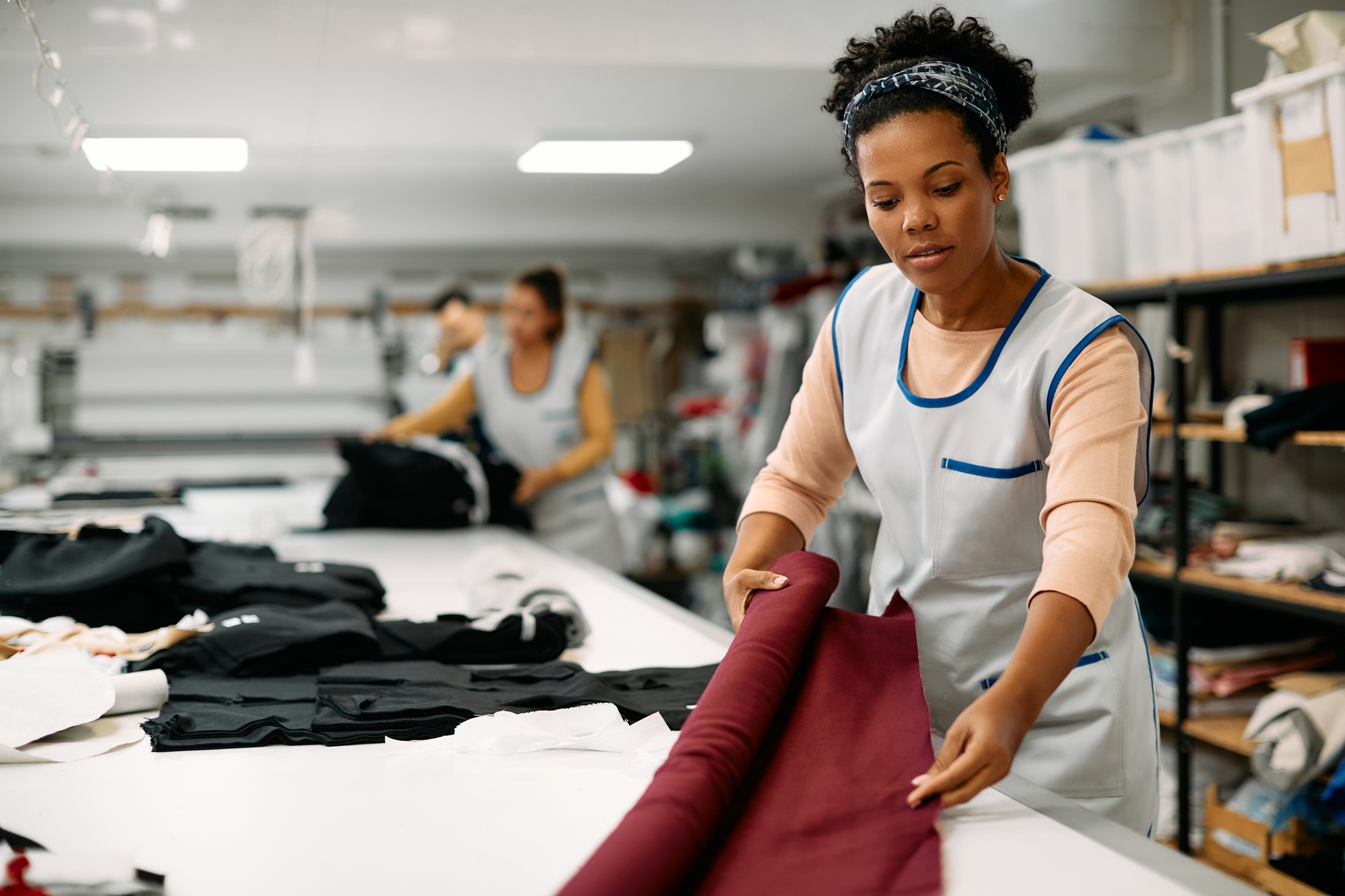Key Takeaways

- Enhances Brand Identity: Employee uniforms act as a visual representation of your brand, reinforcing recognition and trust among customers with consistent colors and logos.
- Fosters Team Cohesion: Uniforms promote unity among employees, creating an inclusive work environment that boosts morale and collaboration.
- Influences Customer Perception: A consistent and professional appearance enhances customer trust and reliability, setting your business apart from competitors.
- Variety of Uniform Types: Understanding the different types of uniforms—corporate, hospitality, medical, casual, and formal—allows for tailored choices that best fit your business needs.
- Focus on Comfort and Safety: Selecting breathable fabrics, ensuring a proper fit, and allowing for easy maintenance are essential considerations for maximizing employee comfort and productivity.
- Alignment with Company Values: Designing uniforms that reflect your brand identity and promote inclusivity can enhance employee engagement and align with your company’s culture.
When you think about a workplace, the first thing that often comes to mind is the attire worn by employees. An employee uniform isn’t just about looking polished; it plays a crucial role in shaping your company’s identity and culture. From enhancing professionalism to fostering team spirit, uniforms can significantly impact both employee morale and customer perception.
In today’s competitive landscape, a well-designed uniform can set your business apart. It communicates consistency and reliability, making a lasting impression on clients and customers. Whether you’re in retail, hospitality, or any other industry, understanding the value of employee uniforms can elevate your brand and streamline your operations. Let’s dive into the benefits and considerations of implementing a uniform policy that resonates with your team and your vision.
Overview of Employee Uniforms

Employee uniforms play a critical role in shaping a small business’s identity and work culture. Uniforms create a professional image, enhancing your company’s presentation to clients and customers. By fostering a sense of belonging among employees, uniforms promote team spirit and unity.
Implementing a uniform policy can also enhance employee morale. When staff wears the same attire, it reduces social and economic disparities, creating a more inclusive environment. This inclusivity not only boosts employees’ confidence but also positively impacts productivity.
Uniforms influence customer perception as well. A consistent appearance conveys reliability, which can enhance customer trust. For small businesses, establishing this trust can differentiate you from competitors in the market.
When selecting employee uniforms, consider factors like comfort, functionality, and branding. Practical uniforms allow employees to perform their tasks effectively while aligning with your business’s vision. Investing in well-designed uniforms can yield long-term benefits for both your workforce and your customers.
Benefits of Employee Uniforms

Employee uniforms provide significant advantages for small businesses, particularly in branding and employee relations.
Enhancing Brand Identity
Employee uniforms serve as a visual representation of your small business’s brand. Uniforms display your company’s colors, logos, and style, which helps customers easily recognize and remember your brand. Visual consistency builds lasting impressions that enhance brand recall. Custom work uniforms, designed to align with your brand’s color scheme and logo, create coherence across all customer interactions. High-quality uniforms signal professionalism and attention to detail, reinforcing customer trust and credibility in your small business.
Promoting Team Cohesion
Employee uniforms foster a sense of unity among your staff. Uniforms create a cohesive and inclusive work environment, essential for small business settings where teamwork is vital. By wearing the same attire, employees feel they belong to a group, which can significantly boost morale and promote collaboration. Additionally, when staff members appear uniform, it reduces social disparities, contributing positively to the overall atmosphere and productivity of your small business.
Types of Employee Uniforms

Employee uniforms play a crucial role in various industries, ensuring that employees present a cohesive image that aligns with your brand’s identity. Understanding the types of employee uniforms can help you make informed decisions for your small business.
Industry-Specific Uniforms
- Corporate Uniforms: Corporate uniforms often come in two styles—business formal and business casual. Business formal includes suits and ties, appropriate for front-office roles that engage directly with customers. Business casual features polos or dress shirts with company logos, suitable for relaxed office environments while maintaining a professional image.
- Hospitality Uniforms: In the hospitality sector, uniforms such as front-desk attire, housekeeping uniforms, and food service uniforms create a polished look for staff. Front-desk attire consists of professional suits or dresses for receptionists, while housekeeping uniforms are designed to be durable and stain-resistant for cleaning staff. Food service uniforms, including chef coats and server attire, ensure that kitchen and dining staff look presentable while performing their roles.
- Medical Uniforms: In medical settings, scrubs serve as the standard uniform for healthcare professionals. Scrubs are lightweight and easy to clean, making them ideal for nurses and doctors who require practical and sanitary clothing during their shifts.
Casual vs. Formal Uniforms
- Casual Uniforms: Casual uniforms allow for comfort while still promoting a sense of professionalism. Options like branded polo shirts or relaxed-fit work shirts create an approachable atmosphere, fostering good relationships with customers. These uniforms can also enhance team bonding, which is particularly beneficial in small business staffing.
- Formal Uniforms: Formal uniforms project authority and professionalism, essential for settings where first impressions matter. These can include tailored suits and dress shoes, often utilized by employees in managerial or customer-facing positions. Formal attire conveys trustworthiness and reliability, crucial aspects in attracting and retaining customers for small businesses.
Incorporating the right types of employee uniforms can significantly affect employee morale and customer perception, making it a key consideration for small business owners and HR professionals looking to build a strong brand identity.
Designing an Effective Employee Uniform

Designing an effective employee uniform involves considerations for comfort, safety, and the incorporation of company values. These factors significantly impact employee morale and customer perception, especially in a small business context.
Considerations for Comfort and Safety
- Fabric Choice: Opt for breathable, durable fabrics suitable for the work environment. Cotton blends, polyester, and moisture-wicking materials enhance comfort and practicality, crucial for employees working long shifts.
- Fit and Flexibility: Choose uniforms that fit well and allow ease of movement. Properly fitted uniforms prevent tripping hazards and provide freedom of motion, essential in environments where employees handle sharp or heavy objects.
- Easy Maintenance: Select fabrics that resist stains and wrinkles, ensuring uniforms remain presentable with minimal effort. Easy-to-clean choices can reduce the workload on your staffing, allowing employees to focus on their roles.
Incorporating Company Values
- Brand Representation: Use colors, logos, and styles that resonate with your brand identity. A uniform that reflects your company’s values enhances recognition and fosters a strong brand presence among customers.
- Promoting Inclusivity: Design uniforms that accommodate different body types and personal preferences. This approach not only instills a sense of belonging but also promotes inclusivity, essential for creating a cohesive team environment.
- Aligning with Company Culture: Ensure that your uniforms align with your business’s culture. If your small business values creativity, consider integrating unique designs that express this ethos. Such alignment enhances employee engagement and reinforces the company’s mission.
Conclusion

Employee uniforms are more than just clothing; they’re a powerful tool for building a cohesive and professional work environment. By investing in the right uniforms, you can enhance team spirit and foster a sense of belonging among your employees. This not only boosts morale but also improves customer perception and trust in your brand.
Selecting uniforms that align with your company’s values and culture can lead to increased productivity and a positive workplace atmosphere. As you consider implementing a uniform policy, remember that thoughtful design and functionality play crucial roles in achieving your business goals. Prioritizing these elements will help you create a strong brand identity that resonates with both employees and customers alike.
Frequently Asked Questions

What are the benefits of employee uniforms?
Employee uniforms enhance professionalism, promote team spirit, and positively influence employee morale. They create a sense of belonging among employees and improve customer perception, which is crucial for small businesses.
How do uniforms affect customer trust?
Consistent uniforms convey reliability and professionalism, which enhances customer trust. A well-dressed staff makes customers feel more confident in the business, particularly in competitive markets.
What types of uniforms are commonly used in different industries?
Common types of uniforms include corporate, hospitality, and medical uniforms. Each type is designed to meet the specific needs of the industry, ranging from formal to practical attire.
How do uniforms promote inclusivity in the workplace?
Uniforms foster unity and reduce social disparities by providing all employees with similar attire. This helps create an inclusive environment where everyone feels valued, boosting confidence and morale.
What should businesses consider when implementing a uniform policy?
Businesses should consider comfort, functionality, and branding when implementing a uniform policy. The chosen uniforms should align with company values and cater to employees’ needs, enhancing overall engagement and satisfaction.
Image Via Envato: Sorapop, Mumemories, dariavoronchuk1, Pressmaster, Media_photos, drazenphoto, nrradmin



